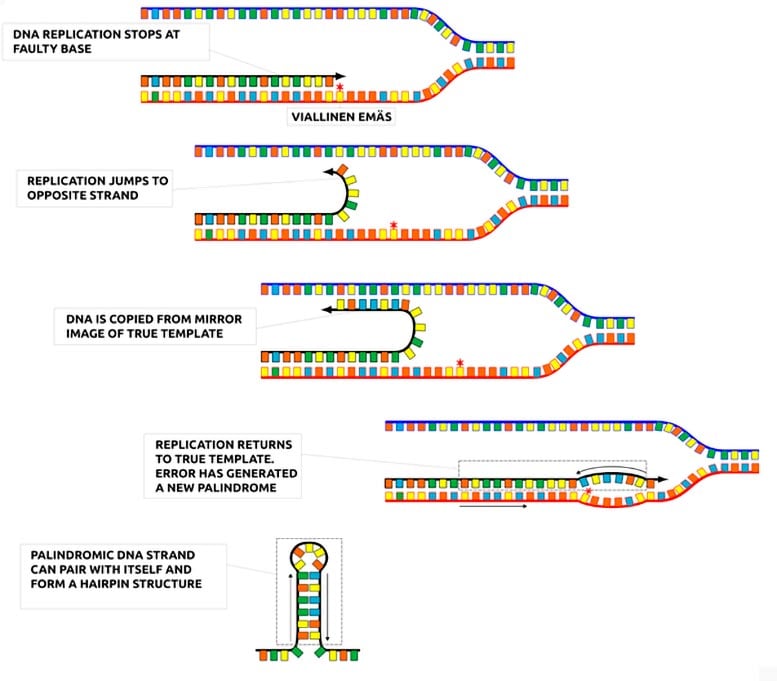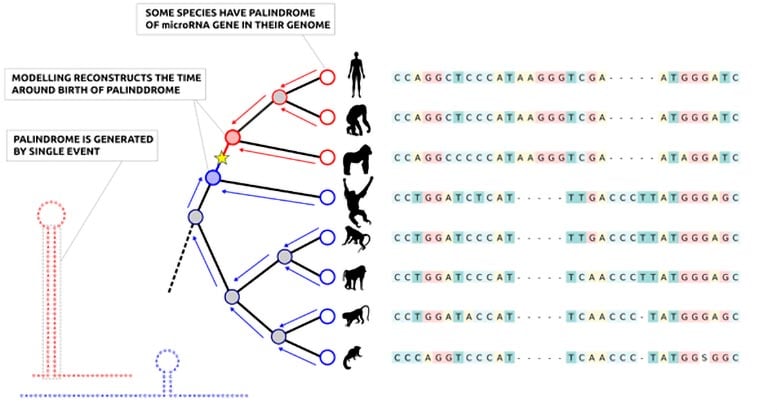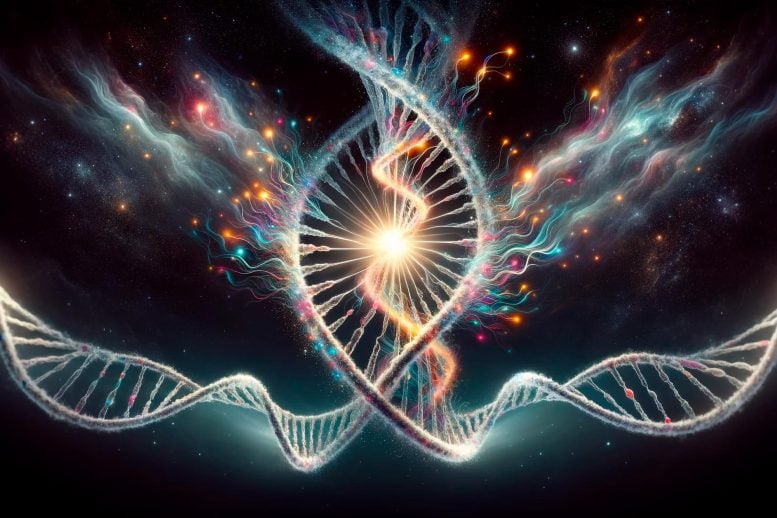A new study reveals a mechanism that generates DNA palindromes that could generate new microRNA genes, reveal gene origins, and potentially impact our understanding of RNA structure.
Researchers at the University of Helsinki have discovered a method that can instantly generate DNA Palindromes may result in the creation of new microRNA genes from non-coding DNA sequences.The discovery was made in the study of DNA replication errors and their impact on RNA The molecular structure provides new insights into the origins of genes.
The complexity of living organisms is encoded in their genes, but where do these genes come from? Researchers at the University of Helsinki have solved outstanding questions about the origin of small regulatory genes and described a mechanism that creates DNA palindromes. Under the right circumstances, these palindromes evolve into microRNA genes.
Genes and proteins: the building blocks of life
The human genome contains approx. 20,000 genes used to build proteins. The actions of these classical genes are coordinated by thousands of regulatory genes, the smallest of which encodes a microRNA molecule of 22 base pairs in length. While the number of genes remains relatively constant, new genes occasionally appear during evolution. Similar to the origin of biological life, the origin of new genes has always fascinated scientists.
Solve the palindrome puzzle
All RNA molecules require palindromic runs of bases that lock the molecule into its functional conformation. Importantly, the chance that random base mutations would evolve into such a palindromic run is very small, even for simple microRNA genes. Therefore, the origin of these palindromic sequences has puzzled researchers. Experts from the Institute of Biotechnology at the University of Helsinki in Finland have solved this mystery, describing a mechanism that can instantly generate complete DNA palindromes, thereby creating new microRNA genes from previous non-coding DNA sequences.
DNA replication insights
In a project funded by the Academy of Finland, researchers studied errors in DNA replication. Project leader Ari Löytynoja likens DNA replication to text input.
“DNA is copied one base at a time, and often mutations are errors in a single base, like an accidental tap on a laptop keyboard. We looked at a mechanism that produces larger errors, such as copying and pasting text from another context. We are particularly interested in situations where text is copied backwards to create a palindrome.”

Researchers studied the mechanisms of errors in DNA replication and noticed that some errors create palindromes that can fold into hairpin structures. Photo credit: Ari Löytynoja
RNA structure and DNA errors
Researchers realize that DNA copying errors can sometimes be beneficial. They described their findings to RNA biology expert Mikko Frilander. He immediately discovered the connection to the molecular structure of RNA.
“In an RNA molecule, bases in adjacent palindromes can pair up and form a hairpin-like structure. This structure is critical to the function of the RNA molecule,” he explains.
The researchers decided to focus on microRNA genes because of their simple structure: These genes are very short, only a few dozen bases, and they must fold into a hairpin structure to function properly.
A core insight is the use of customized computer algorithms to model genetic history. Postdoctoral researcher Heli Mönttinen says this enables the closest examination yet of the gene’s origins.
“The entire genomes of dozens of primate and mammal species are known. Comparisons of their genomes reveal what kind There are palindromic pairs of microRNAs, as well as those lacking it. Through detailed modeling of the history, we can see that the entire palindrome was created by a single mutation event,” said Mönttinen.

A core insight is to use information about related species to model genetic history. This model demonstrates that palindromes in microRNA genes are generated by a single mutational event. Photo credit: Ari Löytynoja
impact and ubiquity
By focusing on humans and other primates, researchers in Helsinki have shown that the newly discovered mechanism can explain at least a quarter of novel microRNA genes. Since similar situations have been found in other evolutionary lineages, the origin mechanism appears to be universal.
In principle, it is very easy for microRNA genes to emerge, and new genes may affect human health. Heli Mönttinen sees the significance of this work more broadly, for example in understanding the fundamental principles of biological life.
“The emergence of new genes from scratch fascinates researchers. We now have an elegant model of RNA gene evolution,” she emphasizes.
Although these results are based on small regulatory genes, the researchers believe the findings can be generalized to other RNA genes and molecules. For example, natural selection may create more complex RNA structures and functions by using raw materials produced by newly discovered mechanisms.
The study was published in Proceedings of the National Academy of Sciences.
Reference: “Template switching generates de novo miRNAs during DNA replication” by Heli AM Mönttinen, Mikko J. Frilander and Ari Löytynoja, November 29, 2023 Proceedings of the National Academy of Sciences.
DOI: 10.1073/pnas.2310752120
#Solving #Palindrome #Puzzle #Hidden #Mechanism #Genetic #Creation
Image Source : scitechdaily.com
